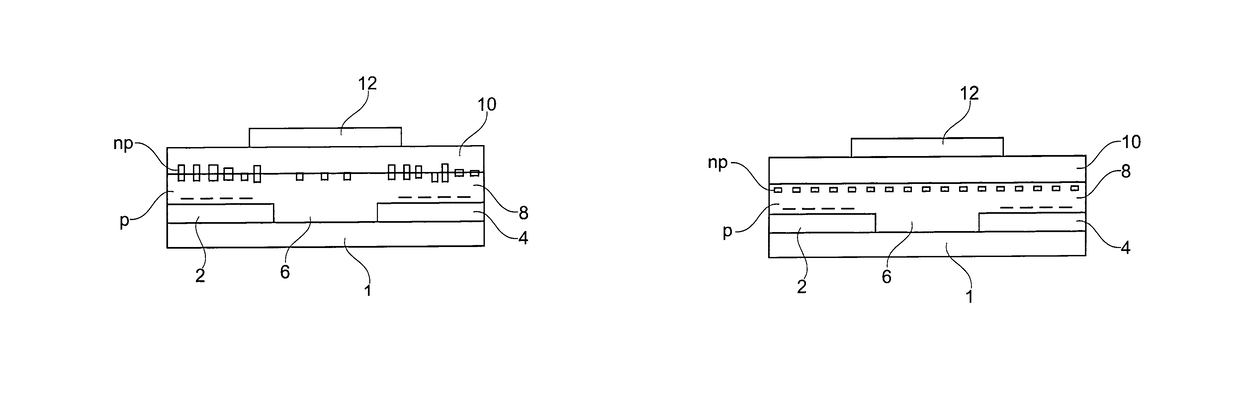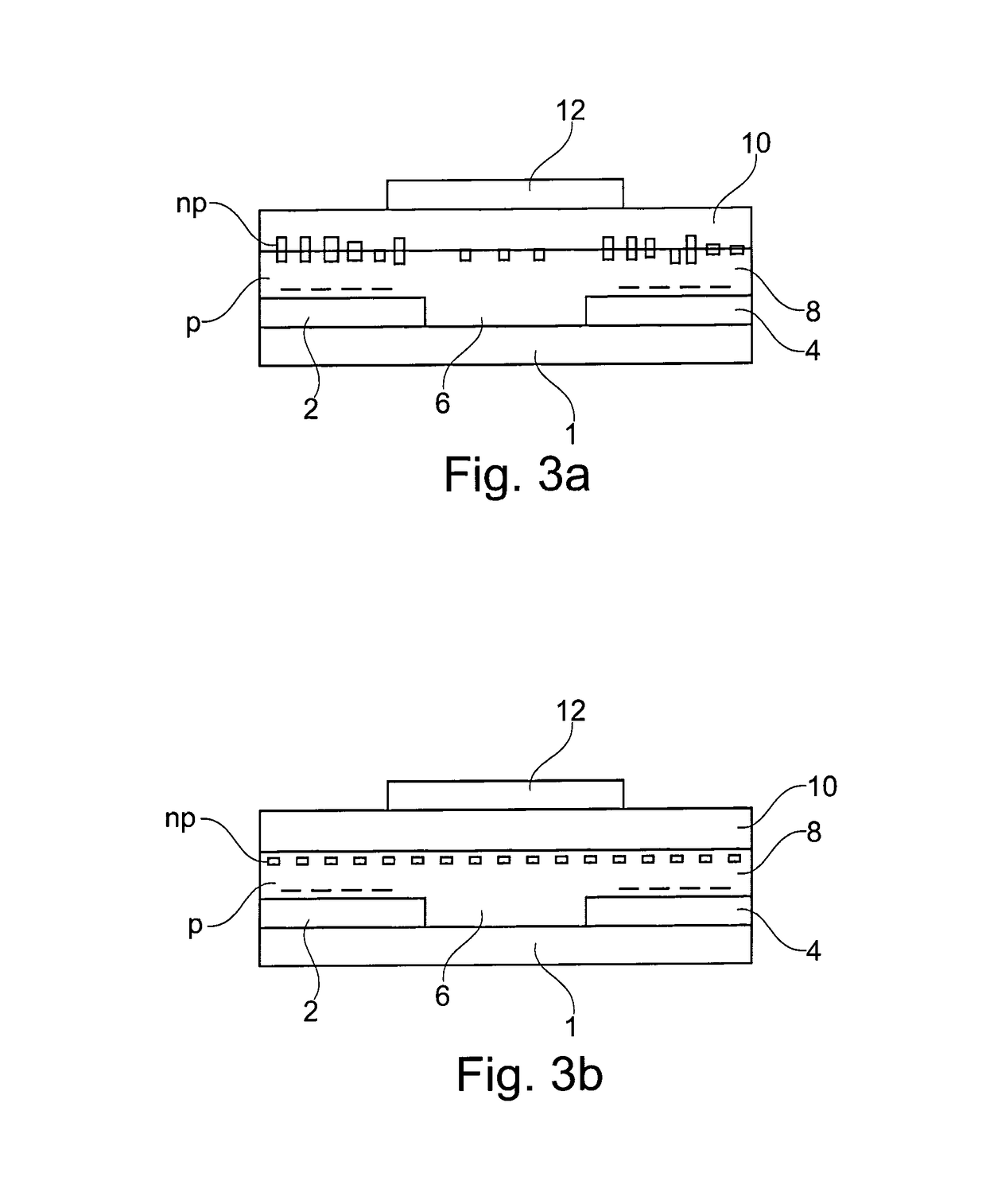Method for preparing a semiconducting layer
a semiconducting layer and semiconducting technology, applied in semiconductor devices, solid-state devices, electrical apparatus, etc., can solve the problems of difficult to obtain repeatable results from solutions, limiting the performance of small molecule semiconductors in otfts, film roughness, etc., to reduce contact resistance, reduce vertical crystal growth, and improve homogeneity
- Summary
- Abstract
- Description
- Claims
- Application Information
AI Technical Summary
Benefits of technology
Problems solved by technology
Method used
Image
Examples
example 1
[0204]In this first example, atomic force microscopy images were taken of devices prepared as described in the above preparative example with a semiconducting layer deposited from either o-xylene alone (as a comparative example) or from solvent mixtures comprising o-xylene and one of either 2-methylanisole, 1,3-dimethoxybenzene or ethylbenzoate.
[0205]The use of o-xylene alone results in solvent evaporation taking place during the deposition of the semiconducting layer. This results in a device in which isolated domains of the non-polymeric semiconductor embedded in the polymer matrix, as can be seen in FIG. 4a (top figure). The 3D AFM (height data) analysis highlights that the channel region of the device mostly comprises the polymeric semiconductor (FIG. 4a, bottom figure), leading to a low mobility device.
[0206]In comparison, it can be seen in FIGS. 4b, 4c and 4d that in devices in which the semiconducting layer was deposited from a solution of o-xylene and one other higher boilin...
example 2
[0207]Mobility data for devices with semiconducting layers deposited from either o-xylene alone or from o-xylene with a higher boiling solvent is shown in FIG. 5. Average peak mobility (in cm2 / Vs) was measured at a range of channel lengths used in the test cells (5 to 100 μm). Devices with the shortest channel lengths were generally found to exhibit lower mobilities (contact resistance is the more dominant component compared to the total channel resistance) and vice versa.
[0208]The use of o-xylene in combination with a second higher boiling point aromatic solvent (in these examples, 2-methylanisole, tetralin, ethylbenzoate and 1,3-dimethoxybenzene) very clearly highlights the improvement in device performance, with those devices exhibiting mobilities of upwards of around 0.2 to 0.8 cm2 / Vs for all channel lengths tested. In comparison, in the device in which o-xylene alone was used, mobilities of between 0.1 and 0.3 cm2 / Vs were measured, with a mobility of greater than 0.2 cm2 / Vs onl...
PUM
| Property | Measurement | Unit |
|---|---|---|
| boiling point | aaaaa | aaaaa |
| boiling point | aaaaa | aaaaa |
| polydispersity | aaaaa | aaaaa |
Abstract
Description
Claims
Application Information
 Login to View More
Login to View More - R&D
- Intellectual Property
- Life Sciences
- Materials
- Tech Scout
- Unparalleled Data Quality
- Higher Quality Content
- 60% Fewer Hallucinations
Browse by: Latest US Patents, China's latest patents, Technical Efficacy Thesaurus, Application Domain, Technology Topic, Popular Technical Reports.
© 2025 PatSnap. All rights reserved.Legal|Privacy policy|Modern Slavery Act Transparency Statement|Sitemap|About US| Contact US: help@patsnap.com



